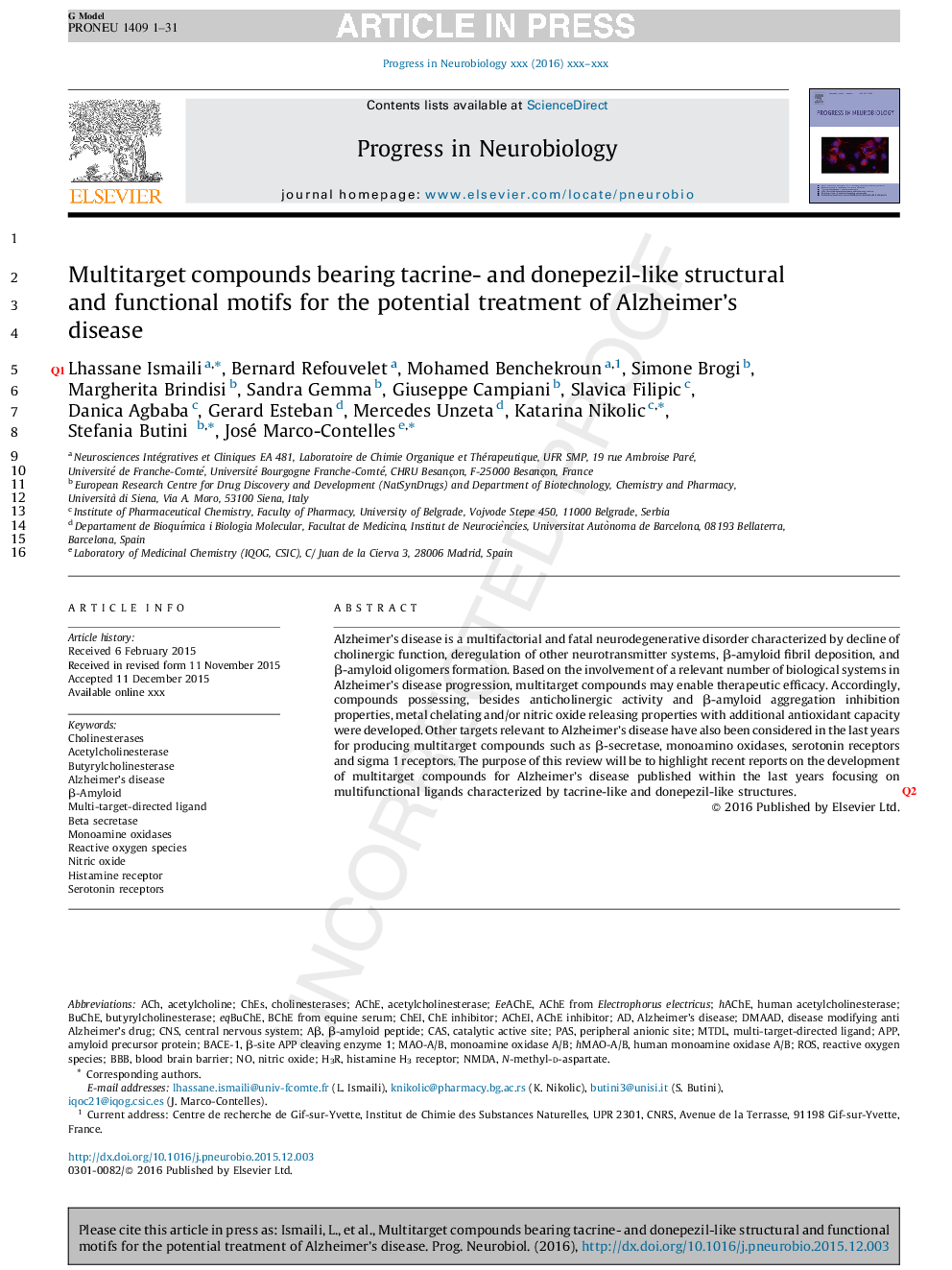| Article ID | Journal | Published Year | Pages | File Type |
|---|---|---|---|---|
| 5739087 | Progress in Neurobiology | 2017 | 31 Pages |
Abstract
Alzheimer's disease is a multifactorial and fatal neurodegenerative disorder characterized by decline of cholinergic function, deregulation of other neurotransmitter systems, β-amyloid fibril deposition, and β-amyloid oligomers formation. Based on the involvement of a relevant number of biological systems in Alzheimer's disease progression, multitarget compounds may enable therapeutic efficacy. Accordingly, compounds possessing, besides anticholinergic activity and β-amyloid aggregation inhibition properties, metal chelating and/or nitric oxide releasing properties with additional antioxidant capacity were developed. Other targets relevant to Alzheimer's disease have also been considered in the last years for producing multitarget compounds such as β-secretase, monoamino oxidases, serotonin receptors and sigma 1 receptors. The purpose of this review will be to highlight recent reports on the development of multitarget compounds for Alzheimer's disease published within the last years focusing on multifunctional ligands characterized by tacrine-like and donepezil-like structures.
Keywords
AβeqBuChEMTDLCASeeAChECHESBACE-1β-site APP cleaving enzyme 1APPBuChEbutyrylcholinesteraseAChEIAChAChEHuman acetylcholinesteraseAcetylcholineAcetylcholinesteraseAlzheimer's diseasehAChECNSPeripheral anionic siteCatalytic active sitecentral nervous systemAChE inhibitorPASamyloid precursor proteinβ-amyloid peptideCHEICholinesterases
Related Topics
Life Sciences
Neuroscience
Neuroscience (General)
Authors
Lhassane Ismaili, Bernard Refouvelet, Mohamed Benchekroun, Simone Brogi, Margherita Brindisi, Sandra Gemma, Giuseppe Campiani, Slavica Filipic, Danica Agbaba, Gerard Esteban, Mercedes Unzeta, Katarina Nikolic, Stefania Butini, José Marco-Contelles,
